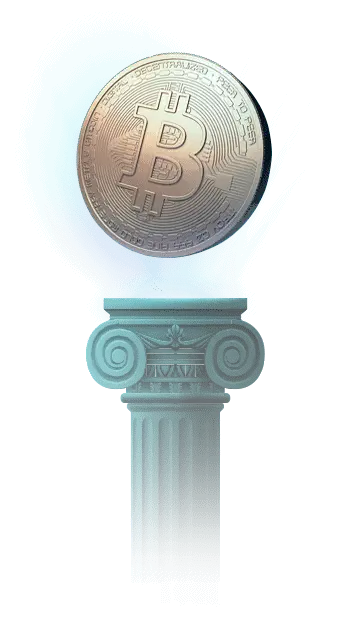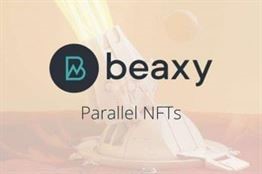Content
But Bitcoin has some of the same strengths and weaknesses as commodity and fiat money. It is only as valuable as people believe it is and has a finite value, such as a commodity. The next question remains, will Bitcoin become the future currency? We saw a great example of fiat monies and the ability to control interest rates, money supply, and liquidity with the central bank’s response to the Great Recession in 2008. The ability to control those aspects of the money helped lessen the blow to both the U.S. and global economies. Currently, most developed nations use a form of fiat money as their mode of payment. For fiat currencies to be successful, the nations must control both counterfeiting and management of monetary supply. Some advantages of fiat money are like it only uses the paper as the only natural resource for manufacturing the notes, it is stable, its supply is unlimited by the government, etc. On the other hand, some advantages of commodity money are like the raw form of the commodity can be redesigned into commodity money, the government never controls the commodity money, etc.
Which one of the following is an example of fiat money?
Well-known examples of fiat currencies include the pound sterling, the euro and the US dollar.
In an economy with inflation, money loses some buying power each year, but it remains money. Ultimately, the usefulness of money rests in exchanging it for goods or services. This concept of money is intentionally flexible, because money has taken a wide variety of forms in different cultures. The Bank of Stockholm in Sweden issued the first regular paper money in the West in 1661. However, https://www.beaxy.com/exchange/eth-usd/ by 1776, the fiat money had devalued so badly that Sweden returned to the silver standard. All national currencies today that are in circulation, and that central banks issue and manage, are fiat currencies. And there you have an example of the first advantage of fiat currency — being able to manage the money supply to make sure there’s enough to prevent economy-crashing deflation.
The financial takeaway
The Swedish government later abandoned fiat money and went back to the silver standard because it failed greatly. Federal government also adopted fiat money, each having different experiences. Read more about convert btc to dollars here. The U.S. eventually went back and continued used commodity-based currency, swapping paper money for gold. With President Nixon in power in 1972, the U.S. permanently switched to fiat currency, abandoning the commodity-based system. The term fiat money is used to describe currency that is used because of a government’s order, that the currency must be accepted as a means of payment. For instance, for the U.S., the dollar is fiat money and for India it is the Rupee. The gold standard is not currently used by any government of the country when comparing with fiat money. Britain stopped using the gold standard in 1931 and the United States abandoned the system in 1971 due to the economic depression. Economic depression result from the declines in the money supply induced by adherence to the gold standard.
So long as enough people continue to think that it will rise ever higher, then it will keep going up. Of course, the higher it goes, the greater the risk of buying it. Even companies will get in on the act, at least for a while, because as long as the hype keeps increasing, Bitcoin will keep rising — until it doesn’t. The table below shows all the transactions that Bank A has had to help us keep track of them. Which of the following are money in the United States today and which are not? The Fed reports several different measures of money, including M1 and M2. Consider a $20 bill that you accidentally left in a coat pocket a year ago. Value has, in effect, been “stored” in that little piece of paper. We can understand the significance of a medium of exchange by considering its absence. From equities, fixed income to derivatives, the CMSA certification bridges the gap from where you are now to where you want to be — a world-class capital markets analyst.
Advantages of Gold over Fiat Currency
The government will also usually encourage the use of its money through the force of law, primarily by declaring it as legal tender. Legal tender is a form of money that must be accepted for the payment of debts and other liabilities. For instance, since 1862, all United States dollars were printed with the phrase “This note is legal tender for all debts, public and private.” Representative money is paper currency that can be exchanged for a fixed amount of a valuable commodity, usually gold or silver. Paper currency is convenient because it weighs little and much larger denominations can be printed that weigh no more than single units of currency.
- In 1971, the U.S. stopped offering foreign governments gold in exchange for U.S. currency.
- Fiat money is intrinsically useless and so it cannot be redeemed for any other commodity.
- Currency appreciation and depreciation on trade deficits depends on the increase or decrease in currency value.
- When people no longer trust a nations currency, then it means the currency is no longer valuable.
- The bottom line is commodity money functions by establishing a value backed by a physical product that everyone assumes has a value, such as gold, silver, or tobacco.
Such regulation of the economy is completely impossible if the money supply cannot be regulated. This is why the United States and every other country of the world has left the gold standard and why cryptocurrencies will never be a major currency for any major economy. To maintain value, the supply of Bitcoins is limited to 21 million. This is why Bitcoin continuously varies widely against government-issued currencies, such as the United States dollar. For this reason, Bitcoin, or any other type of money with a strictly limited supply, will not be useful as money.
Representative money with examples
Inflation results when the supply of money increases faster than the economy expands, which results in higher prices. Sometimes, governments increase the money supply as an easy way to solve fiscal problems, but too much inflation can destroy the value of money. Inflation does the most damage to money as a store of value, since its value continually declines as more money is created. Rather than keeping an inflating currency, people spend it as fast as possible before it loses value, which, in turn, causes prices to rise even more.
Tesla converts appx 75% of its bitcoin purchases into fiat currency – The Financial Express
Tesla converts appx 75% of its bitcoin purchases into fiat currency.
Posted: Thu, 21 Jul 2022 06:57:29 GMT [source]
Many critics of the Fed believe it has gone too far by creating so much money and flooding the system with that much liquidity. Commodity money has many proponents who believe it is the best form of money, and we should move back toward that style of money. Fiat money has none of those characteristics and doesn’t peg to any tangible value; rather, it is only as valuable as the people’s faith in the money. In the early years of the Americas, the only physical coin finding widespread use was the Spanish Dollar, which was the unofficial currency of early America from the early 1600s to 1700s. Interestingly, they changed the Spanish Dollar and cut it into pieces or bits. The offers that appear in this table are from partnerships from which Investopedia receives compensation.
Governments introduced this type of money as an alternative to representative and commodity money. Commodity money is, for example, a valuable metal such as gold that we use as currency. In economics, the term ‘market forces’ refers to the forces of supply and demand. When demand rises faster than supply, the price of something tends to go up. Currency DevaluationCurrency devaluation is deliberately done in order to adjust the established exchange rates by the government and it is mostly done in the cases of fixed currencies. This mechanism is used by economies with a semi-fixed or fixed exchange rate, and it should not be confused with depreciation. Debt is one of the ideas that can use to explain the value of fiat money. As an example, if you are in debt, you have no alternative but try to obtain the pieces of paper in order to pay your debt, and if the paper is scarce, you have to compete for it. Interestingly, indebtedness seems to go hand in hand with fiat money, but that is no conclusive evidence for this theory. As a conclusion, fiat money has value in exchange, but little or no value in use.

The question is, what will replace fiat money when that collapse occurs? Much of the current policy development in the United States and other western countries appears to be focused on the introduction of a Central Bank Digital Currency . In contrast, the deflation of prices related to technological goods is clear evidence that falling prices are not detrimental to economic growth. People do not avoid buying the latest smartphones simply because they expect prices to be lower in future, so the whole argument against gold or other types of commodity money is misplaced. The supply of gold is stable – this has the very important advantage of preventing governments or banks from over-expanding the money supply and thereby causing inflation. However, cattle could not perform all of the functions of money, and precious metals were usually used alongside cattle to perform the function of a store of value and a standard of value for large amounts of money. On this page I will focus on the earliest evolution of money from the barter system to various types of commodities that have been used as money.
It does suggest that no monitoring at all — each person’s previous actions are private information to the person — offers the best shot at making money essential. However, if we want a setting in which some form of credit exists, then no monitoring is too extreme. Phelps placed money in the utility function of his representative consumer and derived the optimal inflation and wage tax, which is assumed to be the only other source of government revenue. A government needing to raise revenue should then optimally tax both liquidity and wages. The explanation is stylized and anecdotal, and is meant to stress the natural aspects of the evolutionary process as well as the essential vulnerability of fractional reserve banking systems. In what follows, we shall explain the evolution of fractional reserve banking from its historical roots in warehousing. In addition to the commonly used M1 and M2 aggregates, several other measures of the money supply are used as well. With its value tied to a government, a fiat currency can significantly depreciate if the issuer runs into trouble.
Liquidity Crisis: Financial Sector SPDR, VanEck Gold Miners ETF Sharp Decline – Seeking Alpha
Liquidity Crisis: Financial Sector SPDR, VanEck Gold Miners ETF Sharp Decline.
Posted: Sat, 16 Jul 2022 14:03:00 GMT [source]
In other words, it is like the money we use today, but has an actual value. For example, gold was used as money, but also in the manufacturing of jewellery. Commercial Bank money is debt that has been created by banks with customers fiat money. It is essentially an ‘IOU’ created by the bank, with the ledger marking some figures in the customers account. By contrast, a sudden surge in the quantity of gold, silver, or other commodity would increase the money supply dramatically. Historically, this has caused sharp decreases in its value – meaning inflation has resulted. Fiat money is potentially a more stable form of money than commodities. This is because there is a steady supply provided by the central bank or government – whoever is in control. For instance, gold can be used as a medium of exchange, but it can also be used for jewelry, gilding, or, an insulator.
1. What is the difference between #fiat currencies and #cryptocurrencies?#Cryptocurrencies are ‘commodity money’, that consists of objects that have intrinsic value in themselves as well as value in their use as a medium of exchange.#behaviouraleconomics
— Andrey Verbitsky (@AndreyVerbitsky) May 30, 2019
In the case of commodity money, the gap is small and may even be negative. A negative gap means the token is more valuable as a commodity than it is as money. If the gap becomes too negative, the public will hoard the tokens, or it will convert them to their material use and thus end their role as money. Commodity money and fiat money are commonly viewed as two quite different kinds of money.
The African nation of Zimbabwe provided an example of the worst-case scenario in the early 2000s. In response to serious economic problems, the country’s central bank began to print money at a staggering pace. That resulted in hyperinflation, which ran between 231 million and 489 billion percent in 2008. Individuals may also debase gold or silver coins by clipping the edges or filing off shavings from coins, melting those small amounts down, and selling them. This results again in coins in circulation that contain less precious metal than indicated.

Although a government has control over its currency supply, it’s still not a guaranteed way to protect the economy from a financial crisis, such as a recession. Another disadvantage of fiat money is that it’s subject to inflation and a government could mismanage and print too much money that could result in hyperinflation. Commodity money has an intrinsic value, which means it has a perceived or true value attached to it. This type of currency is derived from a material that has value, such as gold or silver. Consider dollar bills — they’re all cut from the same paper, but their values can differ depending on what a government deems the currency is capable of being exchanged for. Nowadays, there are different types of currencies — some can be backed by a government, such as fiat currencies, and some are decentralized and backed by blockchain technology, such as cryptocurrencies. This article will go over the answer to “What is fiat currency? Could you imagine having to carry gold when buying your groceries for the week? Earlier in history, people used gold in exchange for goods and services, instead of the paper money we’re all used to today.
In some regions, such as New England and the Carolinas, the bills depreciated significantly and there was a hike in commodity prices as the bills lost value. During wars, countries turn to fiat currencies to preserve the value of precious metals such as gold and silver. For example, the Federal Government of the United States turned to a form of fiat currency referred to as “Greenbacks” during the American Civil War. The government halted the convertibility of its paper money to gold or silver during this war. Long after gold coins became rare in commerce, the Fort Knox gold repository of the United States functioned as a theoretical backing for federally issued “gold certificates” representing the gold. Between 1933 and 1970 (when the U.S. officially left the gold standard), one U.S. dollar was technically worth exactly 1/35 of a troy ounce of gold. A common misconception is that, unlike currencies of the past that were based on a gold, silver, or other precious metal standard, fiat currencies don’t have “anything” backing them. There is one major difference when it comes to the standard price of fiat money and the standard price of gold. The value of the money is decided on the basis of the confidence shown by the people instead of the face value. As a result, there is very little stability in case of fiat money.
Consider this notion: that money and debt are the same thing absent a backing (such as gold) requires one to assume there is a difference between fiat and commodity money (hence your false dilemma). Have you considered what if there isn’t?
— Wes Jones (@WesDJones) April 26, 2021
This will cause people to hoard the money as it increases in value, which will severely damage the economy. Finally, if inflation is too high, then people stop using it as a medium of exchange, and start using barter or the currency of another country or maybe even a cryptocurrency, such as Bitcoin. Cryptocurrency enthusiasts often argue that the main benefit of cryptocurrency is that it is independent of any government. And while blockchains may be secure against undetectable alterations, governments can easily cut off access to blockchains. Governments can also pass laws requiring the organizations or people supporting the cryptocurrency infrastructure to require identification of all users of the cryptocurrency. Blockchains located outside of the country can be blocked within the country. The need to collect taxes requires that the government know people’s income and spending; otherwise, governments cannot survive. While anarchists may laud that, modern civilization cannot exist without government. Bitcoins solve this problem by using a blockchain to create and store the Bitcoins and to record transactions. Blockchains are time-stamped, append-only logs that provide an auditable database, based on a consensus protocol.
What is fiat money Economics quizlet?
What is fiat money? Money that has no value except as the medium of exchange; there is no inherent or intrinsic value to the currency.
